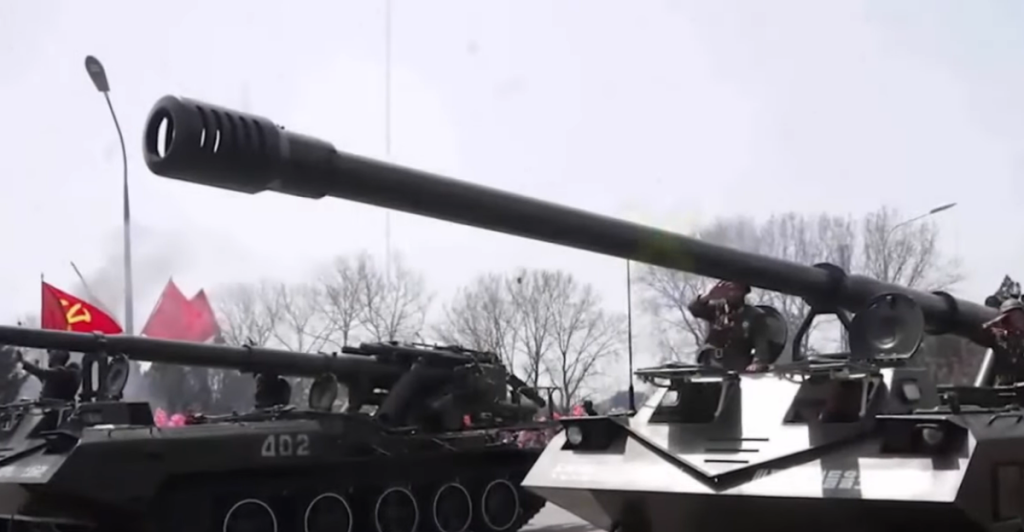After months of speculation, newly surfaced images reveal an unexpected twist in Russia’s battlefield arsenal — with origins far from Europe.
Others are reading now
As the war in Ukraine stretches into its fourth year, Russia is increasingly relying on foreign-supplied weaponry to maintain pressure on Ukrainian defenses. Among the latest additions to the battlefield is the North Korean M1989 Koksan self-propelled howitzer—now confirmed to be operating on Ukrainian soil.
Russia Deploys Koksan Systems from North Korea
For months, speculation mounted over reports that Pyongyang had delivered advanced artillery systems to Moscow. Now, as reported by tech.wp, a photograph circulating online confirms that the M1989 Koksan has reached active Russian units.
Experts from Defence Express estimate that Russia has received at least four deliveries of the North Korean artillery system since late 2024. As of May 2025, up to 200 Koksan units may now be deployed along the front, particularly in northern Crimea, where recent Ukrainian reconnaissance reports documented their presence.
What is the M1989 Koksan?
Having been described as a ‘monstrous’ form of artillery, the M1989 Koksan is a 170mm caliber self-propelled howitzer, mounted on a tracked chassis for battlefield mobility. Its standard firing range is between 40 and 50 kilometers, but with rocket-assisted projectiles it can exceed 60 km—placing it among the longest-range artillery systems in operation today.
Also read
Its tactical capabilities make it a formidable threat, especially in an artillery-heavy conflict such as the one unfolding across eastern Ukraine. The system’s mobility also enables Russian forces to adapt quickly to shifting frontlines or evade counter-battery strikes.
The weapon can be seen in the video below.
Comparing the Koksan to Existing Russian Arsenal
Russian forces previously relied on aging 2S7 Pion howitzers for long-range strikes, but battlefield attrition has reduced their numbers. According to Oryx, Moscow has officially lost 32 such systems, though unofficial counts suggest over 60 losses from a prewar inventory of approximately 100 units.
The introduction of Koksan systems is likely aimed at plugging that gap. Their performance in combat is still being evaluated, but analysts note that North Korea’s provision of such weapons marks a significant step in direct military cooperation with Russia.
Geopolitical Implications
Military support from Pyongyang underscores the widening international dimensions of the Ukraine conflict. With Iran supplying drones and now North Korea delivering heavy artillery, Russia’s ability to sustain prolonged combat appears increasingly tied to support from autocratic allies.
For Kyiv and its Western partners, the presence of M1989 Koksan systems presents both a tactical challenge and a strategic concern, as it suggests a growing willingness among Russia’s partners to provide high-impact military aid. How these systems perform—and how effectively Ukraine can counter them—may help shape the battlefield in the months ahead.


